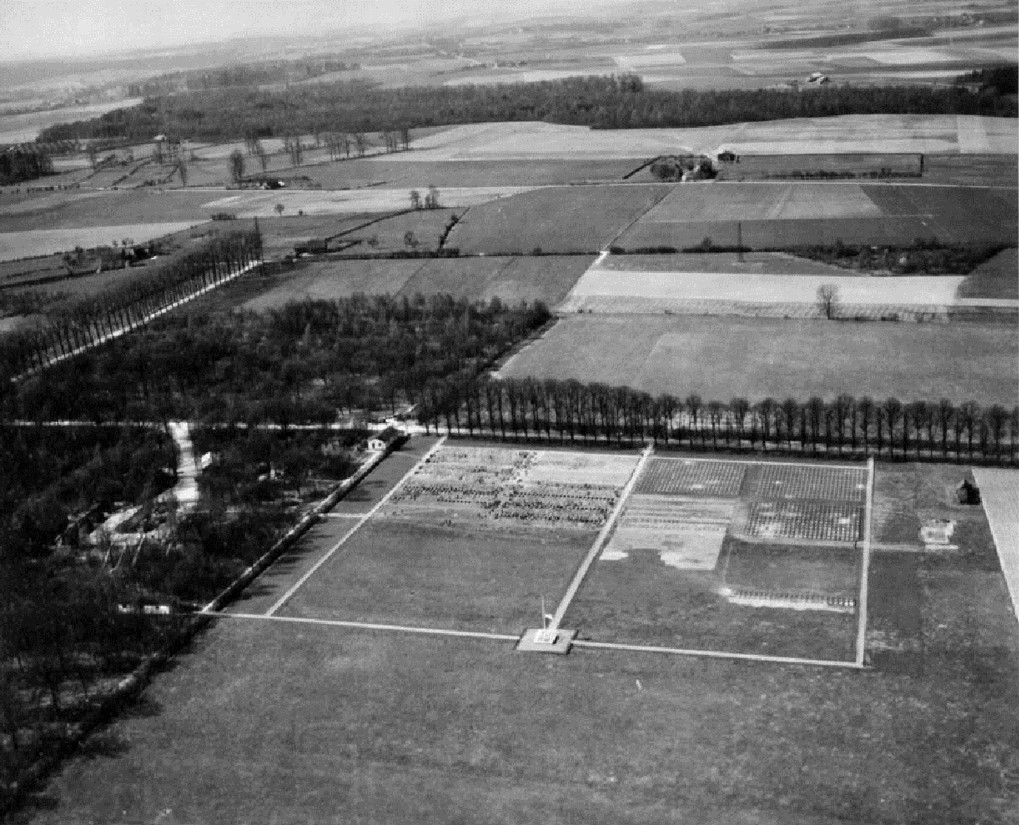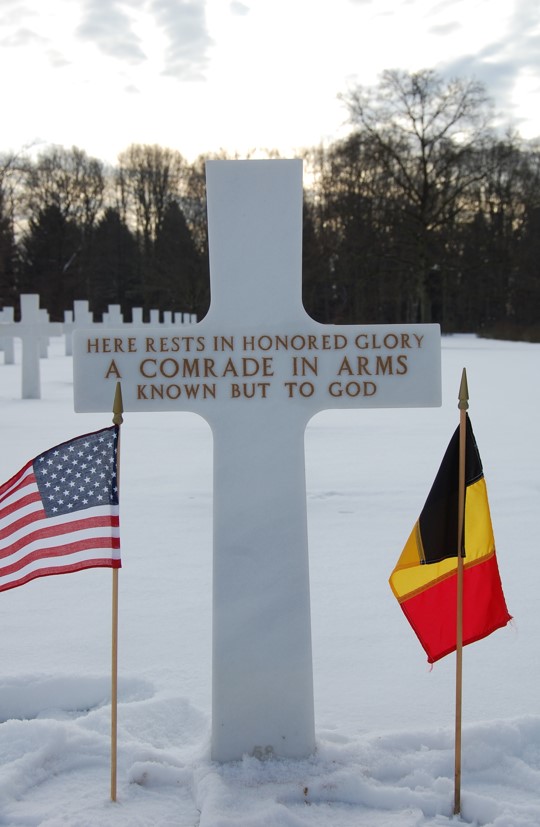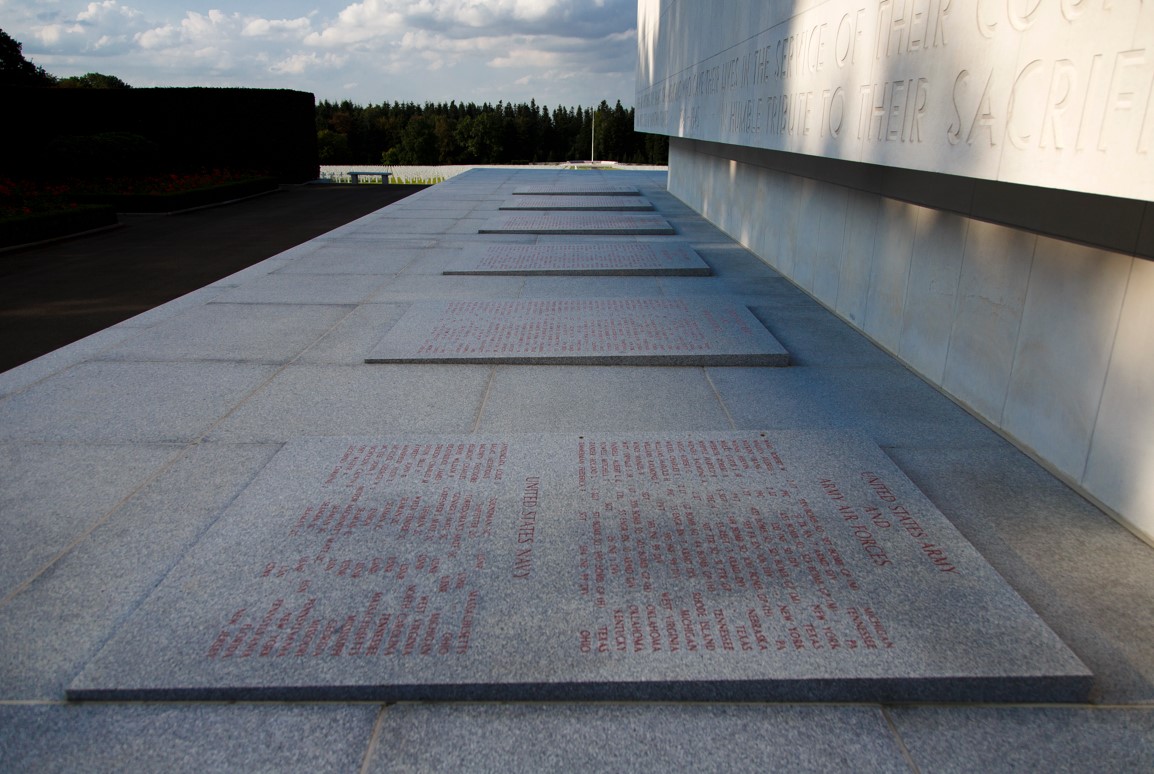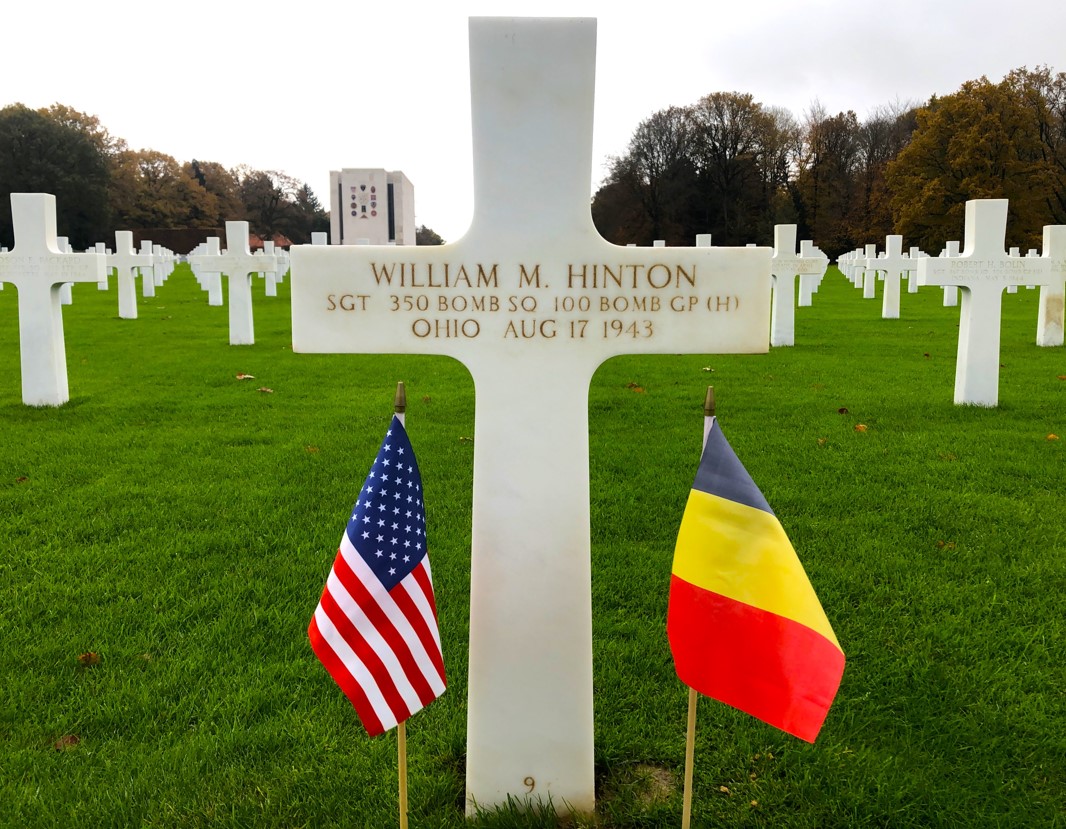The American Battle Monuments Commission’s (ABMC) Ardennes American Cemetery is located in Neupré, Belgium. Of the three ABMC cemeteries in Belgium, Ardennes is one of two commemorating World War II. How well do you know this site? Here are five things you may not know about Ardennes American Cemetery.
A supplementary site after Battle of the Bulge
Ardennes American Cemetery was selected as a supplementary burial site after the Battle of the Bulge, to receive bodies the U.S. Army knew would be discovered in the liberated area. It was not very active before the end of hostilities and VE Day.
The site was designated as the Central Identification Point in April 1946 for the concentration and identification of bodies found in Germany and all isolated graves across the European Theater of Operations. The cemetery rapidly reached the 10,000 interments mark decided as the limit to make it an ABMC permanent site.

No specific campaign attributed to the site
Ardennes American Cemetery concentrates remains coming from all areas of World War II in the European Theater of Operations and the North African Theater of Operations. However, it is not linked with any campaign exclusively. It holds the largest number of unknowns for any cemetery in the European region with 777[1] unknown headstones. While there are 777 headstones, it is impossible to identify how many partial remains may be buried at each marker.

An identification center after World War II
Ardennes American Cemetery served as an identification center for the entire European Theater of Operations from the last days of the war until 1960.
Moreover, this cemetery was the only site open for burials after the end of the repatriation program, and it received a total of 63 burials after its official dedication, 40 of which were unknowns. The last one was Sgt. John T. Puckett buried June 18, 2005.
A majority of burials were airmen of the U.S. Army Air Forces
Recoveries in the Axis countries after the World War II were mostly remains of airmen lost during deep strategic bombing missions. These recoveries were concentrated at Ardennes American Cemetery for identification purposes.
The main challenges faced were locating the burials or crash sites and searching those areas for remains. Making identification more difficult, the cause of death was most often extreme (plane crash, direct hit by ordnance from anti-aircraft artillery, fire), the remains may have already been buried for a long period before recovery, and frequently remains were commingled. In all, 65 % of the service members buried at Ardennes American Cemetery were airmen of the U.S. Army Air Forces.

One service member portrayed in “Masters of the Air”
One service member honored at Ardennes American Cemetery is portrayed in the recently released television show, “Masters of the Air.” Sgt. William H. Hinton was killed in action Aug. 17, 1943. He was aboard a B-17 called “Alice from Dallas.” He lost his life on that day during the Schweinfurt–Regensburg mission, a strategic bombing mission during World War II carried out by B-17 Flying Fortress heavy bombers of the U.S. Army Air Forces.
The mission, an ambitious plan to paralyze the German aircraft industry, was also known as the “double-strike mission” because it entailed two large forces of bombers attacking separate targets to disperse fighter reaction of the Luftwaffe. It was also the first American shuttle mission, in which all or part of a mission landed at a different field and later bombed another target before returning to its base. It caused heavy damage on the Regensburg target but also a great loss within the U.S. Army Air Forces with 60 bombers lost, including Hinton’s, and others damaged.
Known as “Baby Face” in the series, Hinton is buried at Ardennes American Cemetery plot A, row 40, grave 9.

Ardennes American Cemetery is the final resting place of approximately 5,200 Americans. Their headstones are aligned in straight rows that form a Greek cross. Along the outside of the memorial, inscribed on granite slabs, are the names of approximately 500 of the missing, whose remains were never recovered. The north façade on the far end that overlooks the burial area bears the insignia, in mosaic, of the major U.S. units that operated in northwest Europe in World War II.
The ABMC’s mission is to honor the service of the U.S. armed forces by creating and maintaining memorial sites, offering commemorative services, and facilitating the education of their legacy to future generations. It was founded in 1923 following World War I and its 26 cemeteries and 31 monuments honor the servicemen and women who fought and perished during World War I, World War II, the Korean War and the Vietnam War, as well as some who fought during the Mexican-American War.
Those sites are a constant reminder of Gen. John J. Pershing’s promise that “time will not dim the glory of their deeds.”
Sources:
Ardennes American Cemetery’s team
Historical Services
49th ABMC Board Meeting minutes, Feb 13, 1947, page 4, and 50th ABMC Board Meeting minutes, May 15, 1947, page 2.
ARAC infographics
ABMC documents, website and brochures
Schweinfurt–Regensburg mission – Wikipedia
[1] It is the pre-exhumation number.
 An official website of the United States government. Here's how you know.
An official website of the United States government. Here's how you know. 